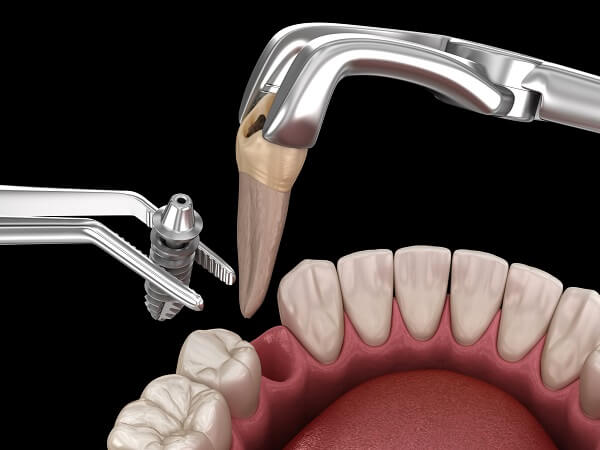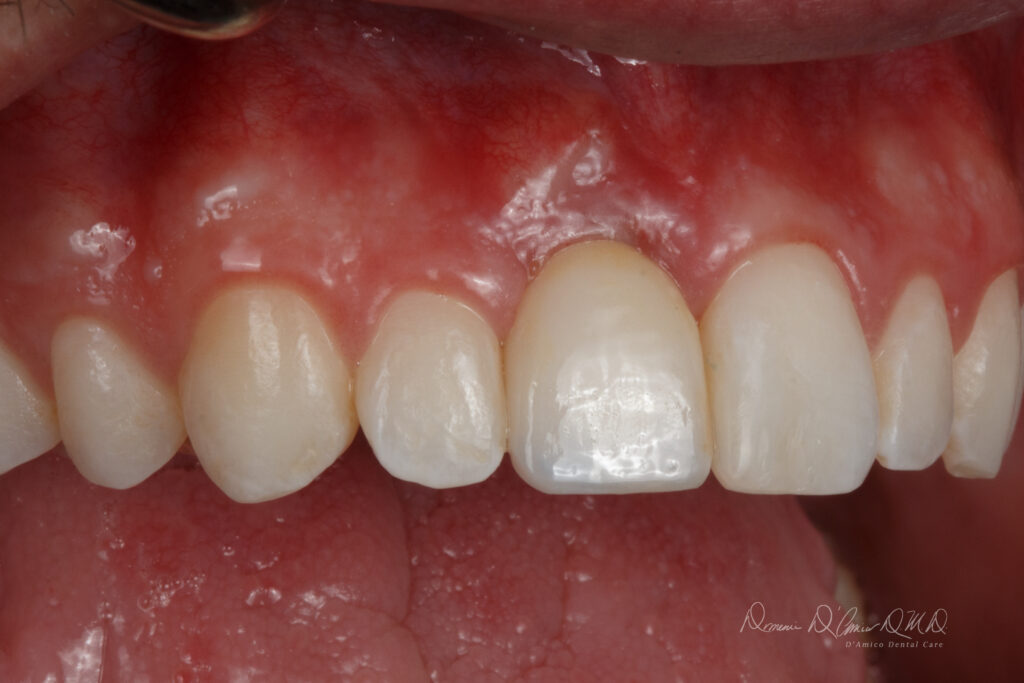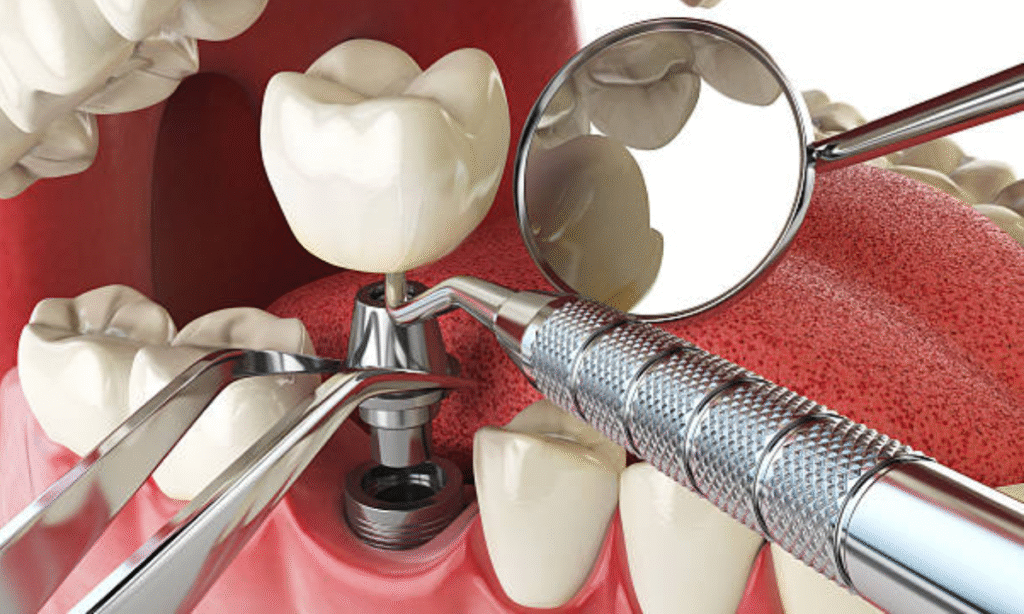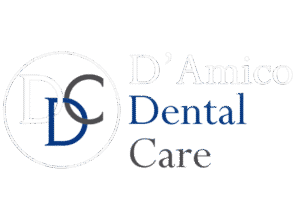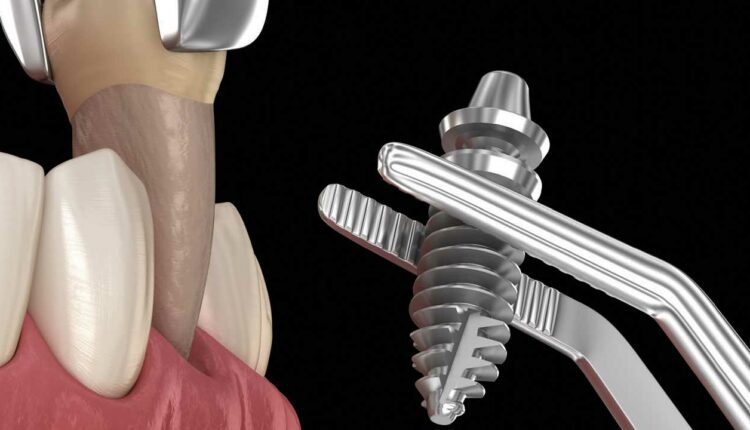
This kind of implant is a procedure where the implant is placed on the same day as the tooth extraction. This means your dentist removes the damaged tooth and inserts the implant post right away into the empty socket. This approach helps patients achieve results faster without waiting months for healing. It’s most commonly used for front teeth since it restores your smile’s appearance quickly. However, not everyone is a candidate; certain conditions must be met.
The biggest advantage of Immediate Dental Implants is the time saved. In just one visit, you get both the tooth extraction and the implant placement. This method also helps prevent gum recession and changes to the facial structure. That said, if you have an infection or a weak jawbone, this might not be the right option for you. After the procedure, extra care is needed—stick to soft foods for a few weeks to ensure the implant integrates properly.
In this blog post, we’ll explore immediate dental implant placement and analyze the key clinical factors—from bone density to infection risk—that determine whether this advanced technique suits your specific dental needs and anatomical conditions.
What Are Immediate Dental Implants?
Immediate Dental Implant is an advanced procedure where the implant post is placed directly into the extraction socket right after tooth removal. This technique utilizes 3D imaging and computer-guided surgery to position the implant with optimal precision. Unlike conventional implants requiring 3-6 months of healing, this approach enables faster tooth restoration. Immediate implants are primarily used for anterior teeth, where aesthetic considerations are paramount.
At D’Amico Dental Care in wayland & watertown, our dental implant technique protects your jawbone and gums while letting you walk out with a temporary tooth the same day – no gaps in your smile! While results are impressive (90-95% success rates), your outcome depends on factors like bone quality and overall health. Perfect for busy patients in Watertown and Wayland who want efficient, natural-looking tooth replacement without multiple procedures.

Benefits of Immediate Implants Over Traditional Implants
Immediate Dental Implants (placed right after tooth extraction) offer significant advantages over traditional methods (which require months of healing) for both patients and dentists:
- Reduced Treatment Time
With this approach, there’s no waiting period for bone healing – the entire process is completed in a single visit. In contrast, traditional implants require 3-6 months of healing before implant placement. - Better Preservation of Bone and Gum Structure
Immediate placement prevents bone loss by replacing the tooth root right away, maintaining functional pressure on the bone. Traditional methods often show noticeable bone volume reduction during the waiting period. - Fewer Surgical Procedures
Traditional implants require at least two surgeries (tooth extraction followed by implant placement), while the immediate approach combines both steps into one. - Superior Aesthetic Results
Particularly for front teeth, this method prevents gum recession and creates a more natural appearance. - Higher Patient Satisfaction
Patients report greater satisfaction due to shorter treatment times and quicker return to normal function.
Who Is a Good Candidate for Immediate Implants?
Immediate dental implant placement occurs directly following tooth extraction. However, patient suitability depends on strict criteria, including adequate bone volume, absence of active infection, and favorable occlusal relationships that ensure primary stability for successful osseointegration.
- Good Overall Health
Patients shouldn’t have uncontrolled systemic conditions like advanced diabetes or severe osteoporosis, as these can interfere with healing. - Adequate Bone Quality and Volume
Sufficient bone density in the implant area (particularly the buccal wall) is crucial for initial implant stability. Significant bone loss typically makes traditional methods more appropriate. - No Active Infection at Extraction Site
Acute infections (like abscesses) usually disqualify patients for immediate implants – infections must be controlled first. - Type of Extracted Tooth
Single-rooted teeth (like front teeth) are better candidates than multi-rooted molars, as implant placement in single-root sockets is more precise. - No Heavy Smoking
Smoking impairs tissue healing, so heavy smokers should either reduce consumption or consider alternative treatments.
Your dentist should always decide on a thorough clinical and radiographic evaluation.
The Immediate Implant Procedure: Step-by-Step
This process may vary slightly, case by case, but generally follows these key steps (briefly explained below):
1. Initial Evaluation & Planning
- Comprehensive clinical exam and imaging (CT scan or digital X-rays)
- Assessment of bone density, tooth root position, and site anatomy
2. Minimally Traumatic Tooth Extraction
- Using atraumatic techniques to preserve bone walls
- Gentle tooth removal without damaging the surrounding alveolar bone
3. Socket Cleaning & Preparation
- Precise socket curettage to remove all pathological tissue
- Irrigation with saline or topical antibiotics
4. Implant Placement
- Selecting the ideal implant size (diameter/length)
- Positioning the implant for optimal function and aesthetics
- Achieving proper primary stability (minimum 35 Ncm)
5. Bone Grafting (If Needed)
- Filling gaps between the implant and bone walls with grafting material
- Potential use of GTR membranes
6. Temporary Restoration (When Possible)
- Placing a temporary crown if implant stability allows
- Alternatively, sealing with a healing abutment
7. Post-Op Care
- Prescribed antibiotics and pain management
- Detailed home care instructions
- Follow-up visits to monitor healing
When everything aligns perfectly, Immediate Dental Implants can restore your smile in just one visit while preserving your natural bone structure!
How Long Do Immediate Dental Implants Last?
When properly placed and cared for, Immediate Implants can last just as long as traditional implants. Studies show long-term success rates of 90-95% for this procedure.
Key Factors Affecting Longevity:
- Jawbone Quality
Adequate bone density and volume are crucial for initial stability and long-term success. - Surgeon’s Skill & Technique
Precise placement in the ideal position significantly improves success rates. - Post-Operative Care
Meticulous oral hygiene and avoiding sudden pressure during the initial healing months are vital. - Patient Lifestyle
Smoking or uncontrolled systemic conditions (like diabetes) may reduce the implant’s lifespan. - High-Quality Materials
Implants with advanced surface treatments (like SLA coating) typically deliver better outcomes.
With immediate dental implant placement under ideal conditions, patients can expect 20+ years of service when complemented by essential 6-month dental check-ups to monitor osseointegration progress, peri-implant tissue health, and occlusal loading factors that collectively determine long-term success.
Recovery and Aftercare Tips
Proper aftercare plays a vital role in treatment success and minimizing complications. These guidelines promote faster healing and long-term implant durability:
First 24-72 Hours (Critical Care Period)
• Bleeding control: Apply gentle pressure with sterile gauze for 30-45 minutes
• Cold compress: Use ice packs intermittently (20 minutes on/off) to reduce swelling
• Medications: Take prescribed antibiotics and pain relievers as directed
• Rest: Avoid strenuous physical activity for 48 hours
Oral Hygiene Protocol
• Gentle brushing: Use a soft-bristled toothbrush starting Day 2 (avoid the surgical site)
• Saltwater rinses: Begin 24 hours post-op (3-4 times daily)
• Avoid alcohol mouthwashes: Refrain for at least 1 week
Dietary Guidelines
• Week 1: Soft, cool foods like yogurt, soup, and mashed potatoes
• Avoid: Hot, spicy, crunchy, or sticky foods for 2 weeks
• No straws: Prevent suction pressure for 3 days
Essential Restrictions
• Smoking/alcohol: Strictly avoid for a minimum of 2 weeks
• Site contact: Don’t touch the area with your tongue or fingers
Follow-Up Schedule
• First check-up: 7-10 days post-surgery
• Routine exams: Every 6 months for implant monitoring
Risks and Considerations
Immediate dental implants, while offering numerous advantages, carry certain risks and challenges. The most common complication is failed osseointegration (occurring in 3-8% of cases), typically resulting from insufficient implant stability or infection. Postoperative infections are seen in 5-10% of high-risk patients and may require implant removal. Other potential complications include marginal bone loss (more than 2mm is considered abnormal) and aesthetic issues like gum recession in anterior areas.
“ Compared with early loading, immediate loading could achieve comparable implant survival rates and marginal bone level changes. Compared with conventional loading, immediate loading was associated with a higher incidence of implant failure.” (pubmed.ncbi.nlm.nih.gov)
Some patients are not ideal candidates for this procedure, including those with severe osteoporosis (T-score below 3.5) or individuals who have undergone jaw radiation therapy within the past 12 months. Heavy smoking (more than 10 cigarettes daily) and uncontrolled diabetes (HbA1c above 8%) also significantly reduce treatment success rates. To mitigate these risks, employing precise surgical techniques, using surface-modified implants, and performing bone grafting when necessary are essential.
Why Choose Immediate Dental Implants for Tooth Replacement?
At D’Amico Dental Care ( Watertown and Wayland ), immediate dental implants represent an advanced technique in modern dentistry, offering significant advantages over traditional methods:
- Preservation of bone and gum structure:
By placing the implant immediately after extraction, this approach prevents bone resorption. Studies demonstrate it can maintain bone volume up to 40% more effectively than delayed protocols. - Reduced treatment duration:
While conventional methods require 3-6 months of healing, immediate implants complete the entire process in a single session – an ideal solution for patients seeking faster results. - Superior aesthetic outcomes:
Particularly in anterior regions, this technique better preserves the natural gum line. Research indicates that patients report higher aesthetic satisfaction with immediate implants - Fewer surgical procedures:
Eliminating the waiting period for bone healing reduces dental visits by up to 50%. - Faster return to normal function:
Patients can use temporary teeth the same day, significantly improving the quality of life during recovery.
Source: www.researchgate.net
FAQ
- How is Immediate Dental Implant Placement Performed?
- Simultaneous placement with tooth extraction: The Implant post is inserted right after tooth removal
- Temporary crown: Placed during the same appointment
- Single-visit treatment: Reduces dental visits
- Specific requirements: Requires adequate bone and healthy gums
- Treatment duration: The Entire process is completed in 1-2 hours
- Why Does Immediate Implant Transform Your Life?
- Quick return to normal life: No toothless period
- Preserves jawbone structure: Prevents immediate bone loss
- Significant time savings: 3-6 months of treatment condensed to 1 day
- Instant aesthetics: Natural smile immediately restored
- Reduces psychological trauma: Avoids the appearance without teeth
- Who Are Ideal Candidates for Immediate Implants?
- Teeth with controlled infection
- Patients with sufficient bone density
- Non-smokers or willing to quit
- Good overall health
- No advanced gum disease
- Highly motivated for post-op care
- What Special Care is Required After Immediate Implants?
- Soft food diet: For the first 4-6 weeks
- Avoid direct pressure: For 8 weeks
- Meticulous hygiene: Soft toothbrush and special mouthwash
- Smoking cessation: Minimum 2 months
- Regular checkups: At 1 week, 1 month, and 3 months post-op
5. Does Immediate Implant Provide Satisfactory Aesthetic Results?
- Maintains natural gumline: Prevents gum recession
- Perfect match with adjacent teeth: Precise digital design
- Excellent color matching: Blends with natural teeth
- Soft tissue stability: Gums maintain their natural form
- Attractive temporary crown: Until final crown placement
6. Is the Additional Cost of Immediate Implant Worth It?
Cost savings from:
- Fewer appointments
- No need for temporary dentures
- Prevents future bone graft expenses
Psychological value:
- Immediate confidence
- Better quality of life
- Quick return to social interactions
Total cost: Typically 10-15% more than the traditional method
7. Why is Immediate Implant a Smart Investment for the Future?
- Prevents progressive bone loss: Maintains jaw structure
- Reduces the need for complex future treatments, like bone grafts
- Long-term stability of adjacent teeth: No extra pressure
- Saves future time and expenses
- Preserves facial youthfulness: Prevents sagging from bone loss

